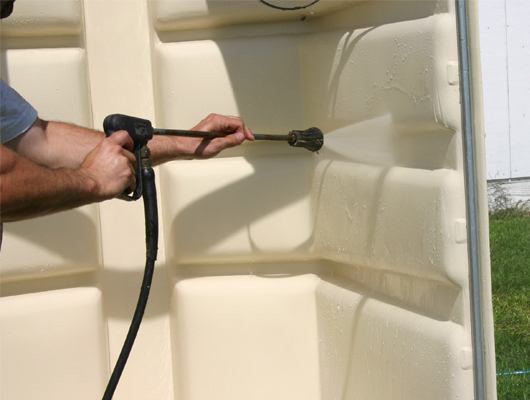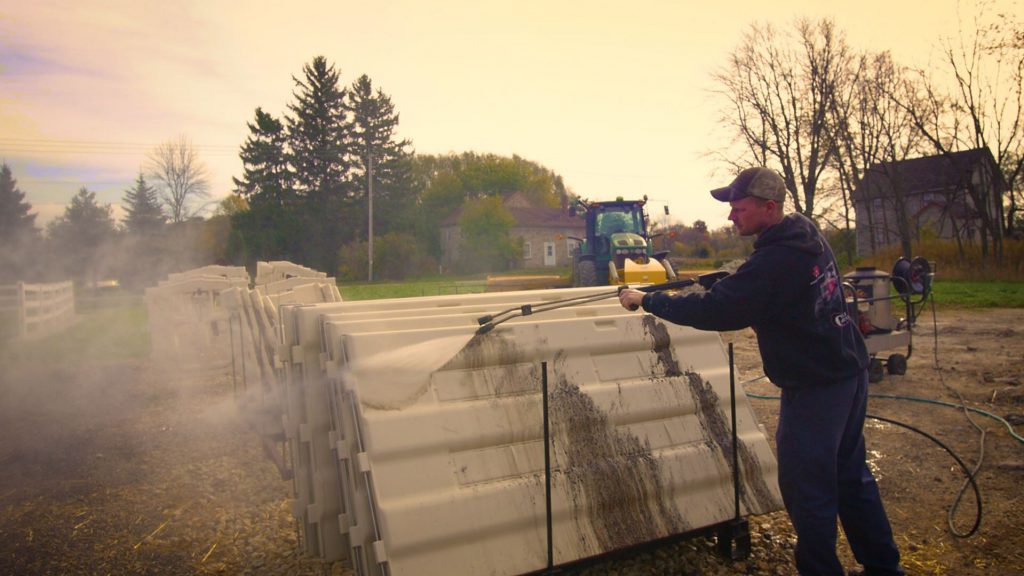by James Umphrey, MS – Eastern US Udder Care & Sanitation Manager for ABS Global

In today’s profit-driven world of dairying, it is important to review all areas and find the opportunities in our operation. Where can we improve and solidify our processes that lead to a successful outcome? In the last few years, we have made unimagined advances in genetics through genomics and sexed semen, getting the best replacement heifers out of our best cows at a higher rate than ever before. High-end heifers are as valuable today as ever, but what about the offspring from the lower end of the herd? Those offspring can create opportunities to bring more value through either the use of sexed high genetic merit semen or beef semen. Either way, producers are looking at the options and making decisions right for them and their operations, then dialing in on the details critical to assuring every calf makes it to become an income stream and not a drag on the bottom line. Every calf needs to do more than survive. They must thrive.
The keys to raising healthy calves are many and complex. One key area is hygiene. To understand hygiene, we need to talk in a similar language. Often these words are used synonymously but truly mean different things:
- Cleaning: the process of removing any visible soils and organic matter including milk, saliva and feces off the surface. This is a great start to any hygiene process but not the end goal for our calf program. In cow prep procedures this is simply a dusting off or dry rub that might be performed before pre dipping the teats.
- Sanitizing: the process where we attempt to reduce the number of microorganisms in an area or on a surface that could be harmful to our health according to public health standards or requirements. Sanitizing reduces, not kills, the number and growth of bacteria, viruses, and fungi.
- Disinfecting: the process that eliminates many or all pathogenic (disease-causing) microorganisms, except bacterial spores, on inanimate objects. The goal of a pre-dip is to disinfect the udder but often falls short due to several factors.
- Sterilization: the process that destroys or eliminates all forms of microbial life (microorganisms). As an example, this is the process applied to surgical instruments in hospitals or in critical areas of an operation where even a small number of bacteria, viruses or spores can cause major issues. Sanitation and disinfection processes are not designed to kill spore formers due to the lack of efficacy of the germicide used or the time needed to kill them.
Numerous microorganisms concern calf raisers. There are also several articles available to review each of these pathogens, their mode of action, and causes of death in calves. A short review of each is below and at what age calves are typically infected.
- Cryptosporidium is a spore-forming pathogen that can affect calves around 5-35 days of age but most prevalent at 7-14 days of age. It is important to note that Cryptosporidium is not generally considered to be a “calf killer” but makes the calf’s immune system more fragile, allowing more opportunistic pathogens to get a stronghold and kill or weaken a calf beyond recovery.
- Rota virus and Coronavirus are both of major concern as they are also most prevalent at 7-14 days of age and are often associated with a calf dealing with a high Crypto load.
- E. coli is a very common pathogen in the calf rearing area and can impact any age but tends to be more devastating very early, with it being most prevalent at less than 7 days of age.
- Salmonella usually hits older calves but can vary greatly depending on the strain.
Hygiene Program for Calf Housing and Equipment
There are two major areas of concern; the pieces that you use to feed calves (buckets, bottles, nipples and mixing utensils) and the housing units. Both are key to keeping calves healthy.
The debate over whether to pressure wash or not is real and is a decision to be made based on your farm factors. My opinion is, if you can isolate the hutches or pen dividers to be pressure washed away from housing units with calves in them, there is little chance of cross-contamination. In general, pressure washing is a great idea and helps ensure that calf housing units are cleaned thoroughly. However, pressure washing can be a point source of bacterial spread to calves when completed within close proximity.

The proper process to sanitize a calf area:
Calf-Tel.com has a good SOP for the process and you can find it here:
Calf Hutch & Pen Cleaning Guide
Steps to the Goal (process)
- The initial step is to remove the interfering agents like organic load and biofilms by cleaning the visible signs of organic matter with warm water at a temperature of 90oF.
- Scrub with a chlorinated alkaline detergent (CAD) at no less than 130oF water. The CAD helps to breakdown the biofilms and fats that many organisms thrive in. The use of a CAD will also create a higher pH (11-12), which aids the destruction of certain organisms and the removal of the biofilms that can interfere and reduce the effectiveness of your germicide used to disinfect.
- Rinse with a solution of Chlorine Dioxide (ClO2)/Acidified Sodium Chlorite (ASC) at a minimum of 50-75 ppm per research completed by Dr. Don Sockett, DVM, Ph.D. at of the University of Wisconsin. (Dairy Herd Management) We have seen excellent results at 240-250 ppm if any of the above steps are marginal.
- Let it dry.
- Rinse a second time with a solution of 50ppm chlorine dioxide (ClO2)/acidified sodium chlorite (ASC) less than two hours before use, allowing a minimum of one minute of contact with the equipment. This is especially important with nipples/bottles or buckets for milk.
Not all Chlorine Dioxide/Acidified Sodium Chlorites (ClO2/ASC) are the same. It is important to test your germicide regularly with an approved method for the specific product you are using. Understand the chemistry of the product you are using and that there is a verification process to ensure you have the germicidal killing power needed to achieve your calf hygiene goals. Application of ClO2/ASC can be through a drench, spraying or, in some cases, even foamed on calf contact surfaces. Some products on the market do have the ability to foam. Foaming can allow better coverage and will stay wet/active longer, increasing the effective kill of organisms.
Hygiene plays a big part in helping you maintain healthy calves and a healthy bottom line. Dairy operations often have a significant investment in genetics to get a live, healthy calf on the ground. Dialing in the details of the farm hygiene program is one important piece in the puzzle leading to that calf adding to the farm’s income statement.
James Umphrey is currently a Milk Quality Specialist and EUS Udder Care Account Manager for ABS Global Inc. He has worked in the Dairy industry for more than 35 years. Prior to ABS, James was on Faculty at the University of Florida for 18 years. He is a graduate of Auburn University receiving a B.S. in Animal Sciences and M.S. in Nutrition. At ABS he has focused on helping dairymen achieve their goals in all aspects of production and milk quality throughout the Eastern US. Please feel free to contact James at james.umphrey@genusPLC.com.
Source:
Dairy Herd Management. (2012, February). Clean calf feeding equipment in six easy steps. Retrieved from https://www.dairyherd.com/article/clean-calf-feedi…
Courtesy of our dealer – CRI REPRODUCCIÓN ANIMAL MÉXICO SA DE CV.
